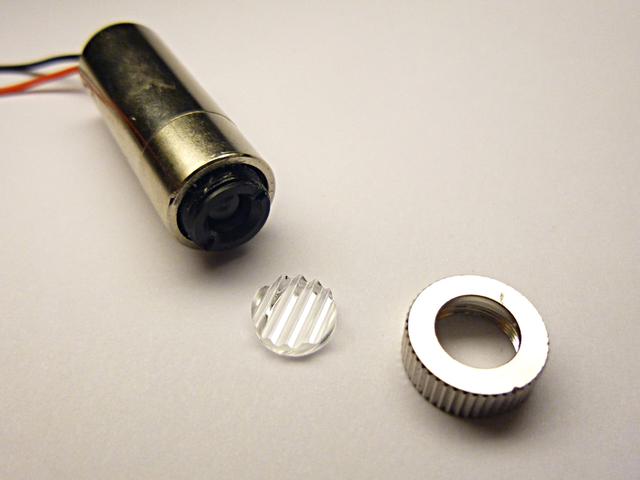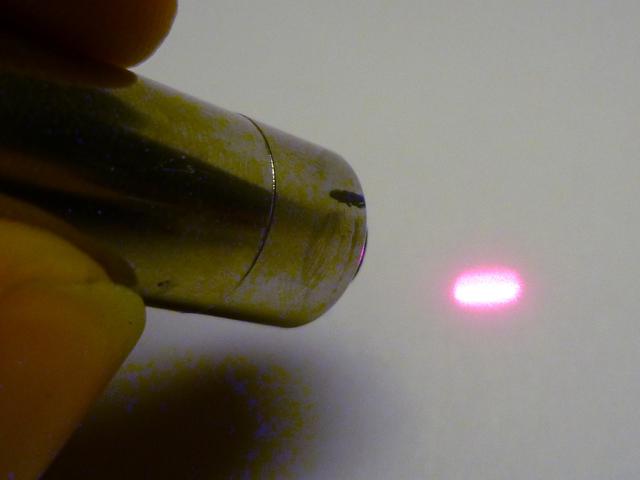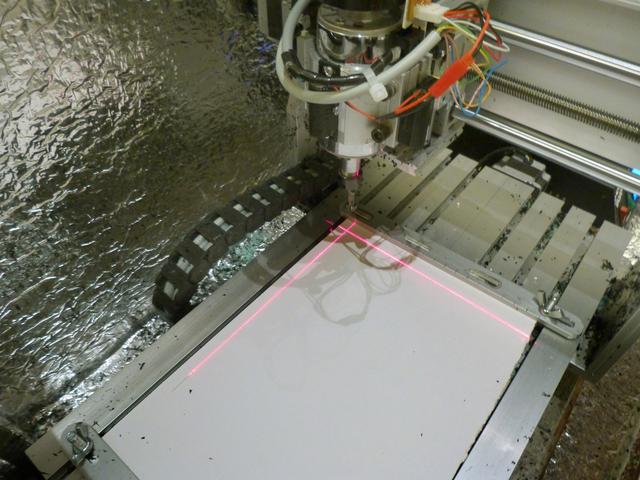Giving a cheap diode laser a sharper beam
Cheap 2 EUR line lasers are used for marking the position in tools such as saws and drills. They are also useful for zeroing CNC routers, provided that the line is thin enough to be precise. With a simple trick the line thickness can be reduced while keeping the beam collimated.

Usually the laser modules have an adjustable lens which can be used to focus the beam. However, if you focus it at a specific distance, its thickness will increase when the distance changes. What is typically wanted is to focus the beam at infinite distance, which called collimating. Then the beam ideally remains fixed diameter no matter how far the object is.
But it turns out that it is not possible to perfectly collimate a laser. There is a fixed relation between the beam size and the minimum divergence angle for any given laser module. If you reduce the beam diameter with lenses, the divergence increases and vice versa. This is not a big problem for high-quality gas lasers, but diode lasers typically have very large divergence and also have different divergence in horizontal and vertical directions of the chip.
There is however one way to reduce the beam diameter without causing it to diverge: cutting some of the light off with an aperture. This reduces the brightness of the laser, but for many applications that is not a problem and can actually be beneficial for eye safety.

Below is decribed one way to add such an aperture to a common cylindrical line laser module.
Step 1: Disassembly
After unscrewing the cap of the module, you will find an adjustable lens and a plastic disc with prisms to convert a spot to a line. You can unscrew the lens also and take a look at the laser diode (preferrably with the beam off :), but that is not necessary.

Step 2: Collimating
With the prism plate removed, you'll notice that the beam is narrower in one direction than the other. Focus the beam on a wall a few meters away and adjust the lens until the beam width is as narrow as possible at this distance. For the divergence limits of typical diode lasers, a few meters is as good as infinity.
After you are happy with the collimation, lock the lens position with some thread lock, super glue or nail polish. Also mark the orientation of the longer dimension with a small line on the casing, so that you can orient the aperture correctly.

Step 3: Creating the aperture
Cut a circular piece of aluminum tape. If you are careful with super glue, you can probably use regular aluminum foil also. Glue it on top of the lens borders. It should not touch the lens surface, but only the plastic edges.

With a sharp knife, cut a slit through the foil, in the same direction as the line you marked on the casing. Try to make the edges as smooth and straight as you can.

Step 4: Reassembly and testing
Put back the prism disc so that the prisms are perpendicular to the aperture, i.e. the line formed will be parallel with the aperture. The line width should now be significantly narrower than before, with the brightness slightly reduced.

In my case, the beam width dropped from approximately 1 mm down to around 0.2 mm. It is still bright enough to be seen easily on most materials.

– Petteri Aimonen on 17.1.2015
